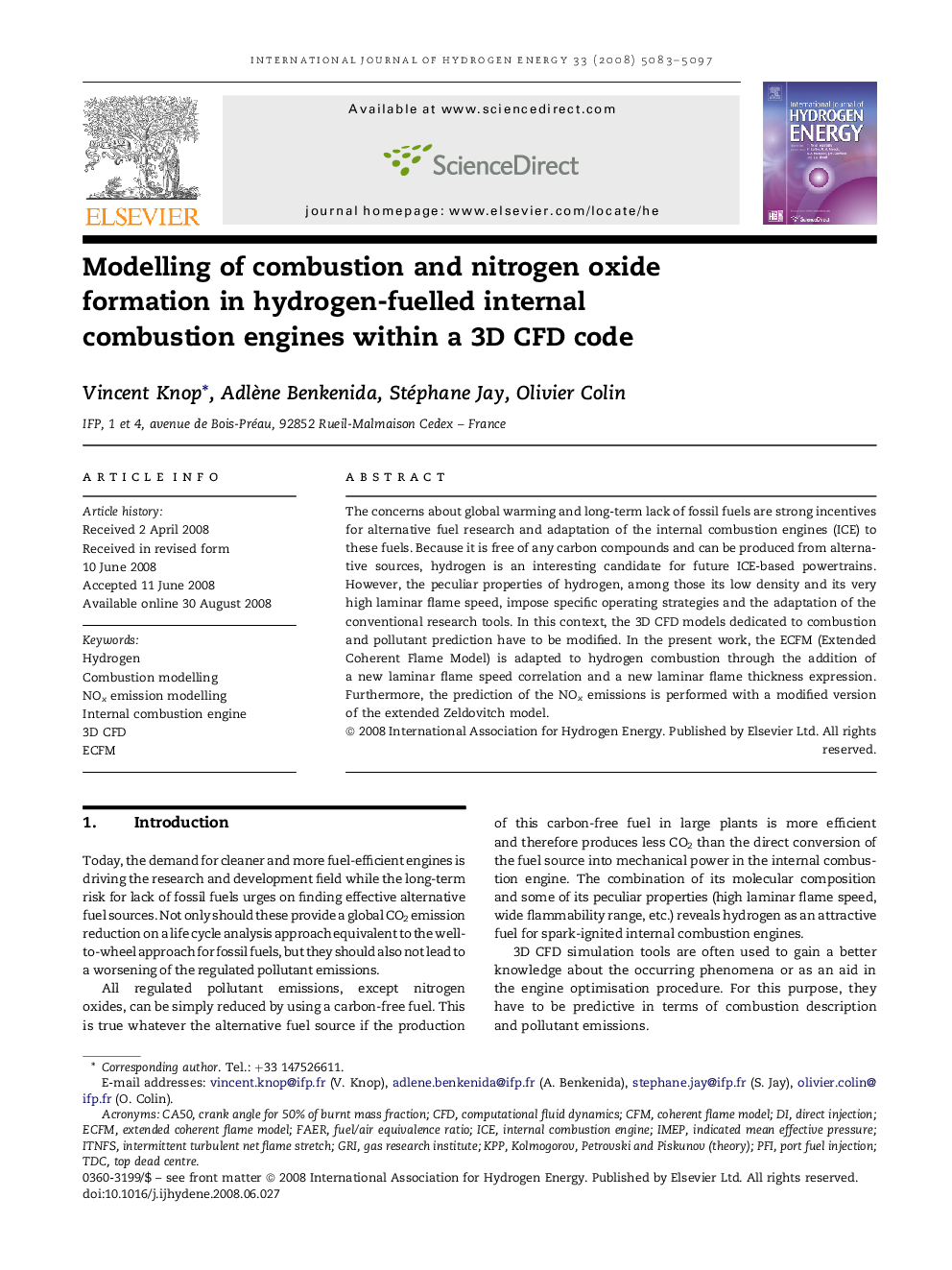| Article ID | Journal | Published Year | Pages | File Type |
|---|---|---|---|---|
| 1281421 | International Journal of Hydrogen Energy | 2008 | 15 Pages |
The concerns about global warming and long-term lack of fossil fuels are strong incentives for alternative fuel research and adaptation of the internal combustion engines (ICE) to these fuels. Because it is free of any carbon compounds and can be produced from alternative sources, hydrogen is an interesting candidate for future ICE-based powertrains. However, the peculiar properties of hydrogen, among those its low density and its very high laminar flame speed, impose specific operating strategies and the adaptation of the conventional research tools. In this context, the 3D CFD models dedicated to combustion and pollutant prediction have to be modified. In the present work, the ECFM (Extended Coherent Flame Model) is adapted to hydrogen combustion through the addition of a new laminar flame speed correlation and a new laminar flame thickness expression. Furthermore, the prediction of the NOx emissions is performed with a modified version of the extended Zeldovitch model.
